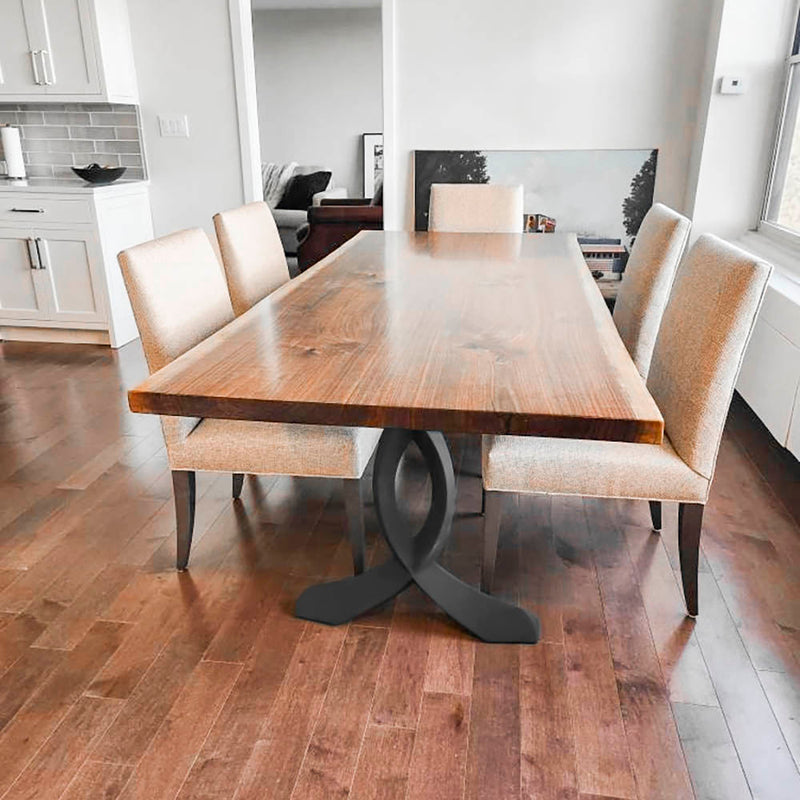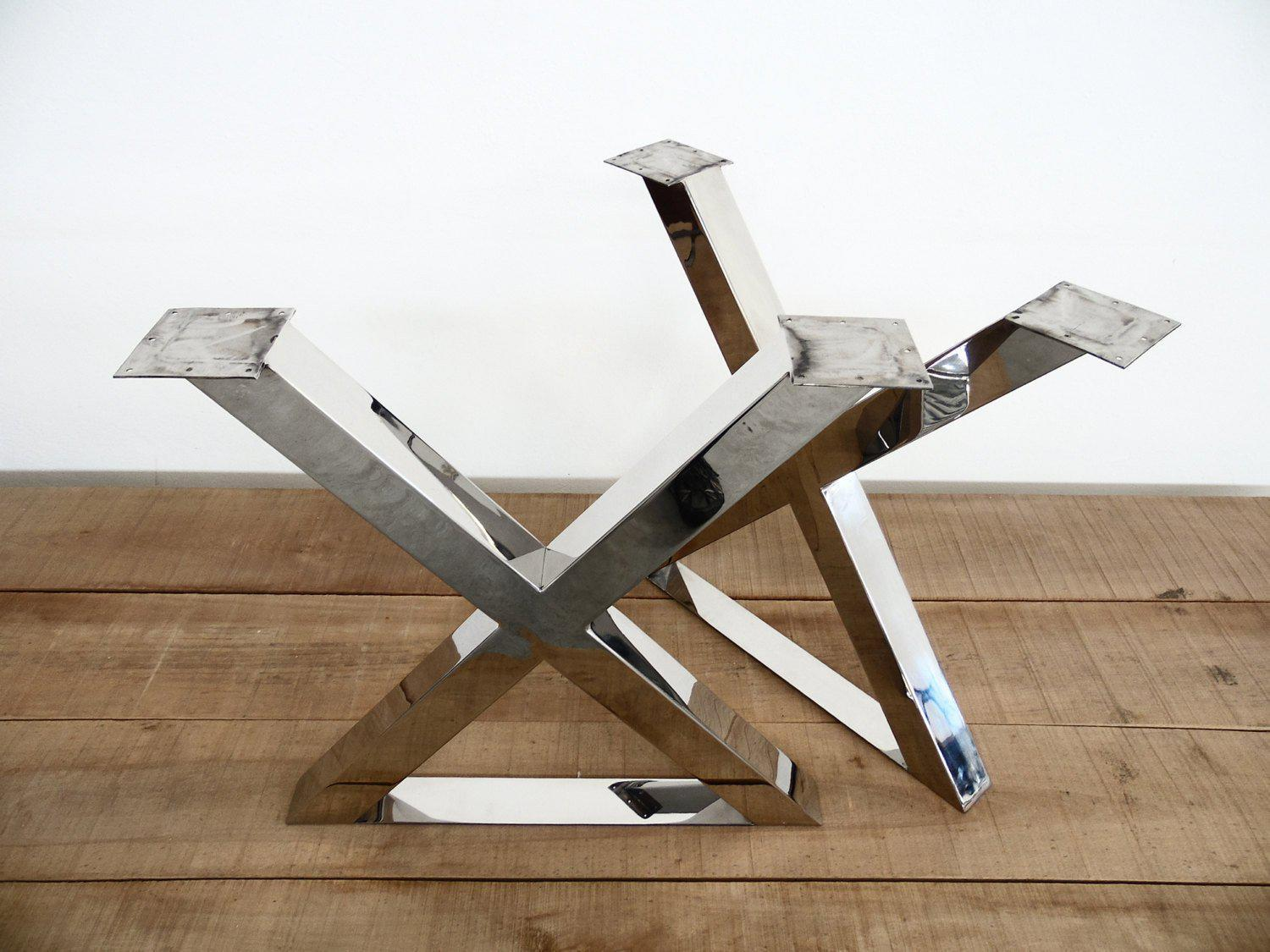The Best Materials for Durable and Elegant Dining Room Table Legs
The Best Materials for Durable and Elegant Dining Room Table Legs
Blog Article
How to Pick the Perfect Dining Area Table Legs for Your Home Decor
Choosing the perfect dining area table legs is a nuanced procedure that calls for mindful factor to consider of different components, including your area constraints, aesthetic preferences, and practical needs. The interplay between designs, measurements, and products can considerably affect the setting of your dining area, making it necessary to approach this choice carefully. As you consider the myriad alternatives offered, it becomes clear that the right choice extends past plain appearance; it can boost your general dining experience. What factors should you prioritize to guarantee your option complements your home's one-of-a-kind character?
Assess Your Dining Area
Examining your eating room is crucial for choosing the right table legs that complement both looks and capability. Begin by determining the dimensions of your eating area, consisting of ceiling elevation, floor area, and distance to various other furnishings. This information will aid establish the proper dimension and height of your table, which straight influences the choice of table legs.
Next, consider the style and design of your eating area. An open-concept layout may benefit from table legs that use aesthetic agility, such as slim steel or acrylic alternatives. Conversely, a much more typical setup could require sturdy wooden legs that give a sense of permanence.
Evaluate the existing shade palette and products in your dining area. Balancing the table legs with these elements creates a cohesive look that enhances the overall style.
Eventually, a comprehensive analysis of your dining space will certainly lead you in making an informed decision, ensuring that your table legs not just boost the visual appeal yet likewise serve sensible functions.
Consider Your Style Preferences
When selecting dining-room table legs, it is necessary to review your individual design preferences, as they dramatically affect the overall aesthetic of your eating area. Your selection of table legs can either complement or contrast with existing design, making it vital to straighten them with your preferred interior design motif.
If your home leans towards a modern-day visual, take into consideration smooth metal or minimal wooden legs that provide a clean, uncluttered look. For a more conventional approach, elaborate wooden legs with detailed carvings can include a touch of elegance and refinement. Industrial styles gain from robust, basic materials such as recovered timber and steel mixes, reflecting a tough charm.
Furthermore, farmhouse and rustic styles commonly prefer durable, beefy legs that evoke a sense of heat and comfort. Alternatively, if your decor is eclectic, you could choose unusual shapes or a mix of materials to develop aesthetic interest.

Evaluate Material Options
The option of material for eating area table legs plays a pivotal function in both longevity and visual appeal. Typical products consist of timber, steel, and composite options, each offering distinct attributes that can affect the overall look and durability of your table.
Timber is a timeless selection, recognized for its heat and versatility. Woods like oak and walnut provide outstanding toughness and can be completed in different spots to match any type of decoration. However, softwoods like yearn are much more prone to dents and scratches, making them less ideal for high-traffic areas.
Steel legs, usually crafted from steel or light weight aluminum, show modernity and industrial charm. They are highly durable and immune to wear, making them suitable for families with children or constant events (dining room table legs). Furthermore, metal can be ended up in different shades, improving the personalization possibilities
Composite products, such as MDF or laminate, offer affordability and varied styles. While normally much less resilient than solid timber or metal, they can still give an elegant appearance and are usually simple to maintain.
Inevitably, the material you choose must align with your way of living, visual choices, and the level of usage your table will certainly experience.
Determine Height and Dimension
Selecting the suitable elevation and size for your dining-room table is necessary for both performance and convenience. The conventional height for dining tables typically varies from 28 to 30 inches, allowing adequate legroom for most individuals when seated. It is essential to consider the measurements of your eating area and the kinds of chairs you prepare to make use of.

In addition, consider the proportions of your dining-room. A larger table in a spacious area can produce a grand atmosphere, while a smaller sized table functions well in even more their explanation intimate settings. Eventually, the ideal height and size will harmonize with your overall decor and enhance the dining experience for you and your guests.
Explore Customization Opportunities

Additionally, the layout of the legs can be tailored to fit different styles, such as rustic, modern-day, or industrial. Tapered legs can stimulate a mid-century contemporary feeling, while beefy, block-style legs might reverberate with traditional or farmhouse decor.
Property owners can also check out color surfaces, from all-natural wood discolorations to paint, allowing them to match or contrast with the table top and surrounding decor.
Additionally, leg height can be adapted to accommodate details seating plans or individual preferences, improving both comfort and performance.
Lastly, special decorations, such as carvings or attractive brackets, can additionally individualize the table legs, making the browse around here dining experience not simply a statement however a dish item in the home. By thinking about these modification options, house owners can develop a dining-room table that absolutely reflects their uniqueness.
Verdict
Selecting the optimal dining-room table legs needs cautious factor to consider of various elements, consisting of the measurements of the eating space, style preferences, material longevity, and desired height. Personalization choices better boost the ability to achieve a cohesive aesthetic that matches the general style. By methodically evaluating these elements, property owners can guarantee that the selected table legs not only meet useful needs yet additionally add favorably to the eating experience and setting of the home.
Picking the excellent eating area table legs is a nuanced procedure that calls for cautious factor to consider of different aspects, including your area restrictions, aesthetic preferences, and practical needs.Assessing your eating room is critical for picking the right table legs that match both appearances and capability.When establishing dimension, determine the area where the table will certainly be positioned to ensure it fits conveniently, allowing for at the very least 36 inches of clearance around the table for very easy motion. A larger table in a spacious location can produce a grand ambiance, while a smaller sized table functions well in more intimate settings.Picking the suitable dining area table legs calls for cautious consideration of numerous aspects, including the measurements of the dining space, design preferences, product toughness, and desired elevation.
Report this page